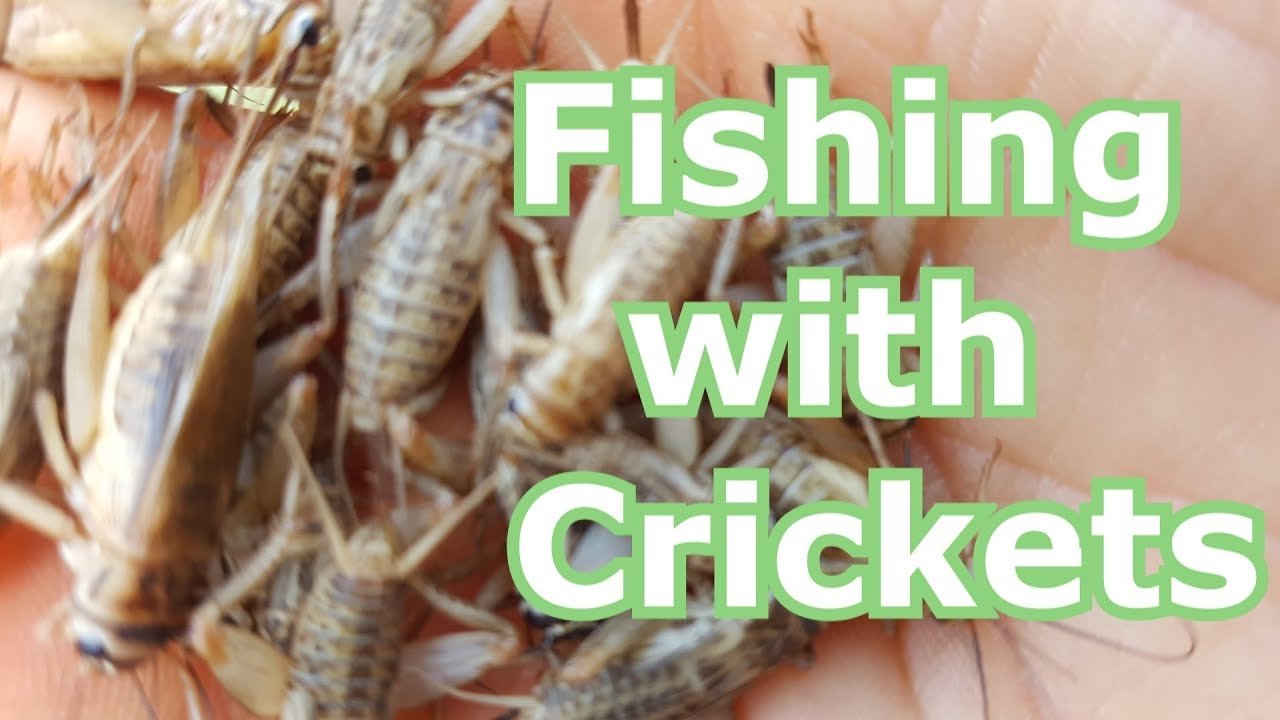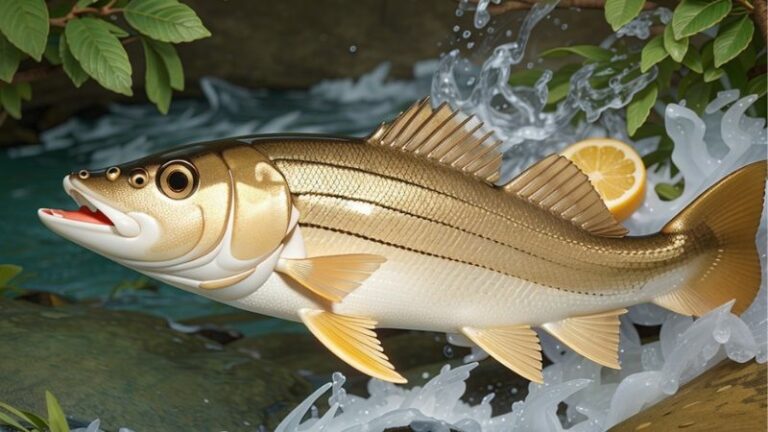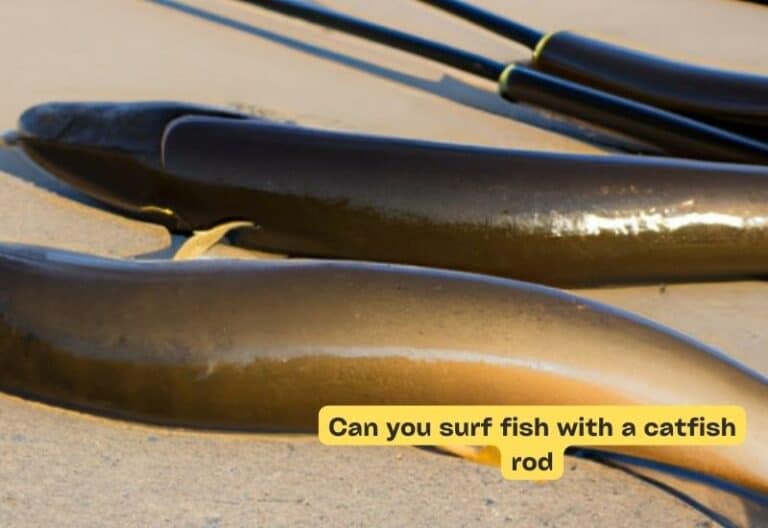Master The Art: How To Hook A Cricket For Bluegill
Are you looking to enhance your fishing skills and hook more bluegill? Well, if you’ve been wondering how to hook a cricket for bluegill, we’ve got you covered! In this article, we’ll dive into the techniques and strategies that will help you achieve success in catching this popular freshwater fish. From bait selection to proper hooking techniques, we’ll equip you with all the essential knowledge you need to make the most out of your next fishing adventure. So, let’s get started and learn how to hook a cricket for bluegill effectively.
How to Hook a Cricket for Bluegill
Fishing for bluegill can be an enjoyable experience, especially when you have the right bait. While there are various options to choose from, using crickets as bait has proven to be highly effective. However, properly hooking a cricket can make a significant difference in your fishing success. In this guide, we will explore the best techniques and tips on how to hook a cricket for bluegill.
1. Choose the Right Size Cricket
When it comes to using crickets as bait, selecting the appropriate size is crucial. Bluegill have relatively small mouths, so opt for smaller-sized crickets to increase your chances of a successful hook-up. Choose crickets that are approximately 1 inch to 1.5 inches in size.
2. Use a Sharp Hook
A sharp hook is essential for effective hooking. Dull hooks can result in missed bites or unsuccessful hook sets. Ensure that your hook is sharp by sharpening it before each fishing trip or using new hooks altogether. This simple step can greatly enhance your success rate when hooking bluegill with crickets.
3. Understand the Anatomy of a Cricket
To effectively hook a cricket, it’s essential to understand its anatomy. Crickets have a tough exoskeleton that can make it challenging to hook them securely. The main goal is to place the hook in a way that maximizes the bait’s longevity and ensures it stays intact during the fishing process.
3.1 Hooking through the Thorax
One common technique is to hook the cricket through its thorax. This method allows the cricket to remain alive and active in the water, attracting bluegill effectively. To hook through the thorax, follow these steps:
- Hold the cricket gently but firmly.
- Insert the point of the hook horizontally through the middle of the thorax, avoiding any vital organs.
- Make sure the hook is secure but doesn’t pierce through the other side of the cricket.
3.2 Hooking through the Abdomen
Another approach is hooking the cricket through its abdomen, just behind the head. This method is suitable for situations where the cricket may not be as active or when a more stationary presentation is desired. Follow these steps to hook through the abdomen:
- Gently hold the cricket near its head.
- Insert the point of the hook vertically through the top of the abdomen, just behind the head.
- Avoid hooking too deeply, as it may reduce the cricket’s lifespan in the water.
4. Use a Bobber
Using a bobber, also known as a float, can be beneficial when fishing for bluegill with crickets. A bobber helps suspend your bait at a specific depth, making it easier to attract bluegill near the surface or at their preferred feeding level. Adjust the bobber’s position based on the water depth and where you believe the bluegill are located.
5. Experiment with Different Rigs
There are various rig setups you can try when fishing with crickets for bluegill. Some popular options include:
5.1 Basic Bobber Rig
– Attach a small hook to your line using a clinch knot.
– Slide a small bobber onto the line, approximately 1-2 feet above the hook.
– Adjust the bobber’s position according to your desired fishing depth.
– Secure a split shot weight above the hook to provide some sinking action for your bait.
– Cast your rig into suitable bluegill areas and wait for a bite.
5.2 Carolina Rig
– Tie a small barrel swivel to your mainline using a clinch knot.
– Attach a leader line to the other end of the barrel swivel.
– Tie a small hook to the leader line using a clinch knot.
– Place a small split shot weight above the barrel swivel to provide some sinking action.
– Slide a plastic bead onto the leader line above the weight.
– Hook your cricket onto the small hook.
– Cast your rig and let it sink to the desired depth, then slowly retrieve it.
6. Be Mindful of the Presentation
When using crickets to target bluegill, it’s important to present your bait in a natural and enticing manner. Bluegill are known for their keen eyesight, so make sure your cricket looks appealing and lively. Avoid using excessive weight or dragging the bait along the bottom, as this may appear unnatural and deter bluegill from biting.
7. Be Patient and Observant
Lastly, fishing for bluegill with crickets requires patience and attentiveness. Bluegill can be finicky biters and may require some time before committing to a bite. Stay alert, watch for any signs of nibbles or bobber movements, and be ready to set the hook when you feel a bite.
By following these techniques and tips on how to hook a cricket for bluegill, you’ll increase your chances of landing these delightful fish. Remember to adhere to local fishing regulations and enjoy the experience of angling for bluegill!
Fishing with Live Crickets for Bluegill, Panfish, Bream- How to Hook
Frequently Asked Questions
How do I hook a cricket for bluegill fishing?
When hooking a cricket for bluegill fishing, start by selecting an appropriate hook size, such as a small size 8 or 10. Gently place the hook tip through the thickest part of the cricket’s body, just behind its head. Be sure to avoid damaging the cricket’s vital organs. To make the cricket more attractive to bluegill, you can remove its back legs or pinch them off to create more movement. Finally, cast the hooked cricket into the fishing area, allowing it to float or sink naturally, and be ready for a bite!
What size hook should I use when hooking a cricket for bluegill?
It is recommended to use a small hook size, such as a size 8 or 10, when hooking a cricket for bluegill fishing. Using a smaller hook ensures that the cricket is securely attached while still allowing for a natural presentation. With a small hook, you can effectively target bluegill without overwhelming them with a large and conspicuous hook.
Where should I hook the cricket for bluegill fishing?
When hooking a cricket for bluegill fishing, it is best to insert the hook tip through the thickest part of the cricket’s body, just behind its head. By hooking it in this location, the cricket will have a natural appearance in the water, making it more enticing for bluegill. Be careful not to damage the cricket’s vital organs while inserting the hook.
Can I remove the cricket’s legs when hooking it for bluegill fishing?
Yes, you can remove the cricket’s back legs or pinch them off when hooking it for bluegill fishing. By doing so, you create more movement and action in the water, which can attract bluegill. Removing the legs also helps prevent the cricket from getting snagged or tangled while casting or retrieving the bait.
Should I let the hooked cricket float or sink?
Whether you should let the hooked cricket float or sink depends on the preferences of the bluegill and the fishing conditions. Bluegill often feed near the surface, so letting the cricket float can be an effective strategy. However, if the bluegill are deeper or the water is choppy, allowing the cricket to sink can help attract these fish. Experiment with different depths and retrieve techniques to see what works best on any given day.
What other bait can I use besides crickets for bluegill fishing?
In addition to crickets, bluegill can be caught using a variety of baits, such as worms, grubs, small minnows, and even artificial lures like small jigs or spinners. Experiment with different baits to see which ones the bluegill in your area prefer. It’s also a good idea to check with local anglers or tackle shops to get recommendations on effective baits for bluegill in your specific fishing location.
Final Thoughts
In conclusion, mastering the art of hooking a cricket for bluegill requires a few key techniques. First, ensure the cricket is lively and properly hooked to attract the bluegill’s attention. Use a small hook size to mimic the natural size of the bluegill’s prey. Cast near cover or structure where bluegill are likely to hide and feed. Lastly, be patient and attentive to any subtle nibbles or bites. By implementing these strategies, anglers can increase their chances of success when targeting bluegill with a cricket.




